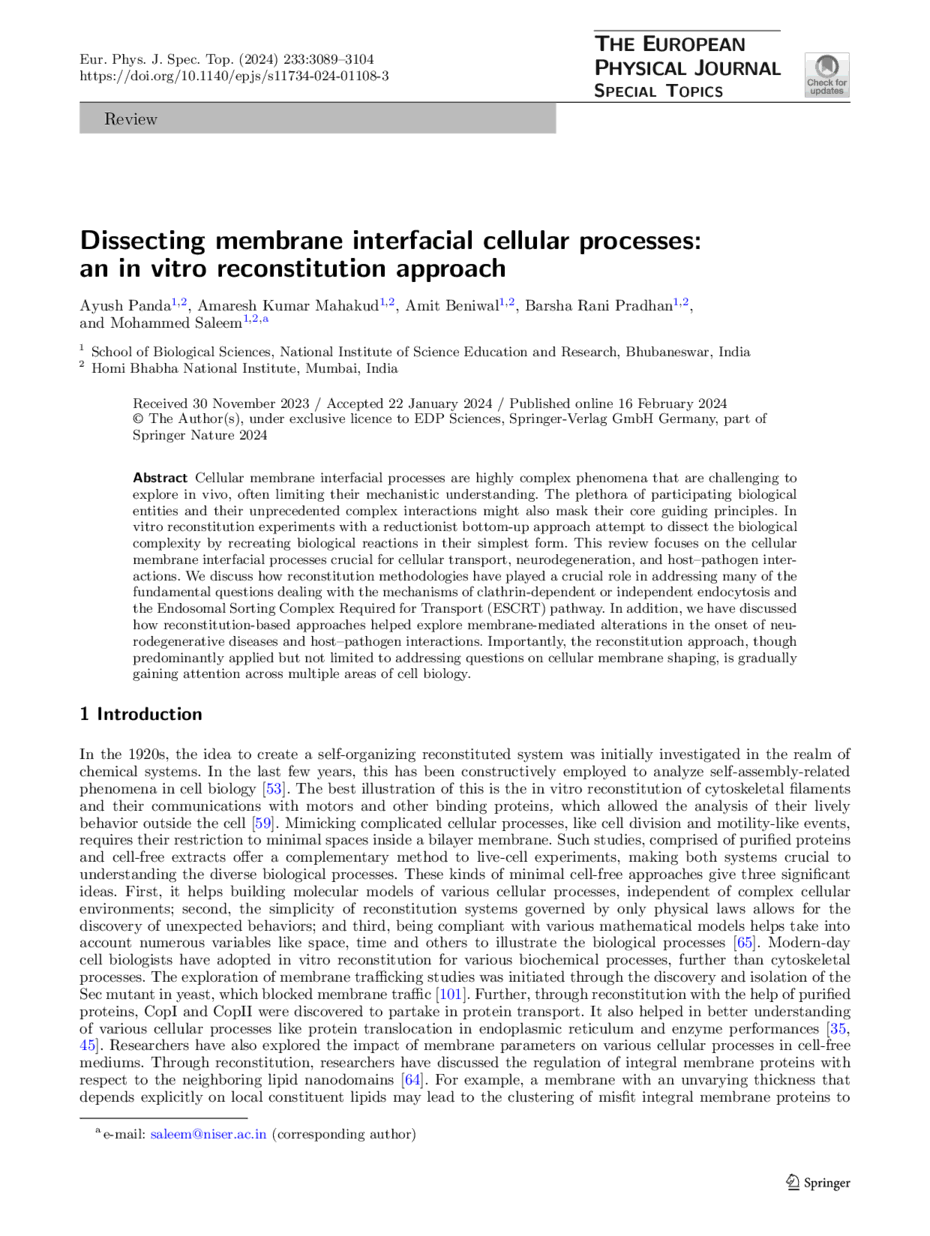https://doi.org/10.1140/epjs/s11734-024-01108-3
Review
Dissecting membrane interfacial cellular processes: an in vitro reconstitution approach
1
School of Biological Sciences, National Institute of Science Education and Research, Bhubaneswar, India
2
Homi Bhabha National Institute, Mumbai, India
Received:
30
November
2023
Accepted:
22
January
2024
Published online:
16
February
2024
Cellular membrane interfacial processes are highly complex phenomena that are challenging to explore in vivo, often limiting their mechanistic understanding. The plethora of participating biological entities and their unprecedented complex interactions might also mask their core guiding principles. In vitro reconstitution experiments with a reductionist bottom-up approach attempt to dissect the biological complexity by recreating biological reactions in their simplest form. This review focuses on the cellular membrane interfacial processes crucial for cellular transport, neurodegeneration, and host–pathogen interactions. We discuss how reconstitution methodologies have played a crucial role in addressing many of the fundamental questions dealing with the mechanisms of clathrin-dependent or independent endocytosis and the Endosomal Sorting Complex Required for Transport (ESCRT) pathway. In addition, we have discussed how reconstitution-based approaches helped explore membrane-mediated alterations in the onset of neurodegenerative diseases and host–pathogen interactions. Importantly, the reconstitution approach, though predominantly applied but not limited to addressing questions on cellular membrane shaping, is gradually gaining attention across multiple areas of cell biology.
Copyright comment Springer Nature or its licensor (e.g. a society or other partner) holds exclusive rights to this article under a publishing agreement with the author(s) or other rightsholder(s); author self-archiving of the accepted manuscript version of this article is solely governed by the terms of such publishing agreement and applicable law.
© The Author(s), under exclusive licence to EDP Sciences, Springer-Verlag GmbH Germany, part of Springer Nature 2024
Springer Nature or its licensor (e.g. a society or other partner) holds exclusive rights to this article under a publishing agreement with the author(s) or other rightsholder(s); author self-archiving of the accepted manuscript version of this article is solely governed by the terms of such publishing agreement and applicable law.





